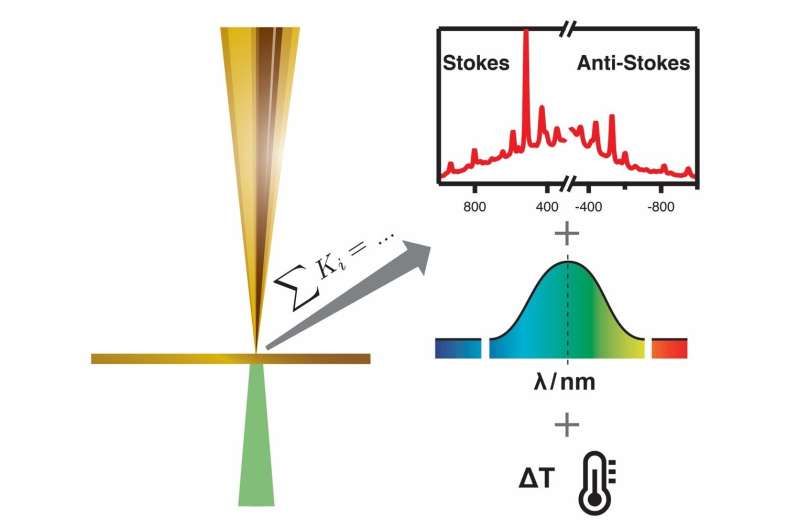Unraveling optical parameters: New method to optimize plasmon enhanced spectroscopy

Plasmon enhanced spectroscopy allows scientists to reach single molecule sensitivity and a lateral resolution even down to sub-molecular resolution. A major challenge for it to become a user-friendly analytical tool however is that scientists have lacked comprehension of most relevant experimental parameters with regard to the technology. Two researchers from Jena, Germany now present a method to unravel plasmonic properties during the experiment and thus provide a reliable approach to investigate and directly optimize experimental conditions.
For exploring the nanoscale far beyond the optical resolution limit, tip-enhanced Raman spectroscopy (TERS) is widely recognized as an essential yet still emergent technique. Using this marker-free spectroscopic method scientists gain insights into the structural and chemical composition of surfaces with nanoscale resolution which are not accessible with other methods. Examples where such nanoscale resolution spectroscopies are crucial are structural investigations: of novel materials (e.g. diamond layers, 2-D materials etc.), of protein aggregates, of triggers for diseases like diabetes type II or Alzheimer's, or even of catalytical reactions at work. However, scientists' lack of comprehension of crucial parameters of the actual probe still limits the potential of TERS as a user-friendly analytical tool. Until now scientists have not been able to unravel the most fundamentally relevant experimental parameters as the tip's surface plasmon resonance, heating due to near-field temperature rise, and the link towards spatial resolution.
In a new paper in Light: Science & Application, a research team from Jena, Germany now presents the first accessible method to gain unprecedented insights into the plasmonic activity of a single nanoparticle during a typical TERS experiment. Prof. Volker Deckert from the Leibniz Institute of Photonic Technology, Jena, and Dr. Marie Richard-Lacroix from the Friedrich Schiller University Jena propose a straightforward and purely experimental method to assess plasmon resonance and near-field temperature experienced exclusively by the molecules directly contributing to the TERS signal. Using standard TERS experimental equipment, the scientists evaluate the detailed near-field optical response, both at the molecular level and as a function of time by probing simultaneously the Stokes and anti-Stokes spectral intensities. This enables them to characterize the optical properties of each individual TERS tip during the measurement.
"The proposed method could be a major step to improve the usability of TERS in day-to-day operation," Prof. Deckert explains. "The actual conditions to which the molecules are submitted from one experiment to the next can now be investigated and optimized directly, in real-time, and at the sample scale." This is especially relevant when it comes to examining biological samples like proteins which cannot tolerate high temperatures.
"To the best of our knowledge, no other accessible methodology opens up access to such a wealth of information on the plasmonic activity during a typical TERS experiment," Dr. Richard-Lacroix says.
"We believe that this methodology will contribute to improve the accuracy of theoretical models and facilitate any experimental plasmonic investigation and the application of TERS in the field of nanoscale thermometry," the scientists foresee.
More information: Marie Richard-Lacroix et al, Direct molecular-level near-field plasmon and temperature assessment in a single plasmonic hotspot, Light: Science & Applications (2020). DOI: 10.1038/s41377-020-0260-9
Journal information: Light: Science & Applications
Provided by Chinese Academy of Sciences




















